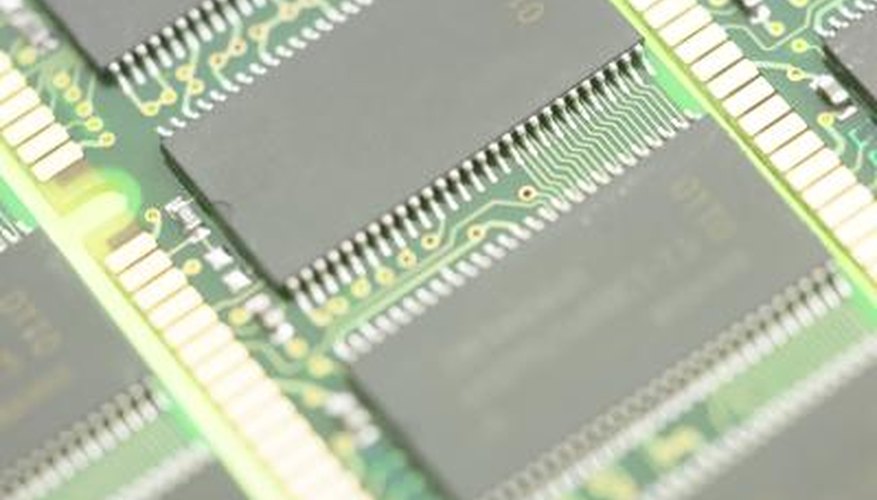Although advancements in technology have increased the speed of hard drives, they are still the main performance bottleneck in modern computing. RAM (Random-Access Memory) is a type of memory the computer uses to perform calculations and store data, files and programs it is actively working with. Because RAM is faster than a hard drive, this enables the computer to perform functions much faster than it could by working directly from the hard drive. There are two primary forms of RAM: Static RAM and Dynamic RAM.
Comparison
To understand the advantages and disadvantages of Static RAM, it helps to understand the differences between Static RAM and Dynamic RAM. Dynamic RAM stores a bit of data in a single memory cell consisting of a transistor and capacitor. To store the information, the computer puts energy into the cell to charge the capacitor. Because this energy quickly leaks out, the computer must recharge the cells every few milliseconds to keep the data from being lost. In contrast, Static RAM uses a flip-flop design, utilising multiple transistors to eliminate the need to keep refreshing the charge.
- To understand the advantages and disadvantages of Static RAM, it helps to understand the differences between Static RAM and Dynamic RAM.
- In contrast, Static RAM uses a flip-flop design, utilising multiple transistors to eliminate the need to keep refreshing the charge.
Advantages
Because Static RAM does not need to have its charge refreshed every few milliseconds, it uses less power than Dynamic RAM. This efficiency also results in Static RAM operating much faster than Dynamic RAM.
Disadvantages
Although Static RAM is faster and more efficient, the very factors that contribute to its advantages also result in significant disadvantages. Because the Static RAM uses multiple transistors to implement its flip-flop design, it has a smaller memory per chip ratio. As a result, comparable quantities of static memory take up more space than Dynamic RAM. Static RAM also costs more, due to the extra electronic components required.
- Although Static RAM is faster and more efficient, the very factors that contribute to its advantages also result in significant disadvantages.
Applications
The speed and efficiency of Static RAM make it ideal for CPU cache, used to quickly perform calculations. The cost and space limitations of Static RAM are offset by the relatively small quantities of cache used in modern computers.
